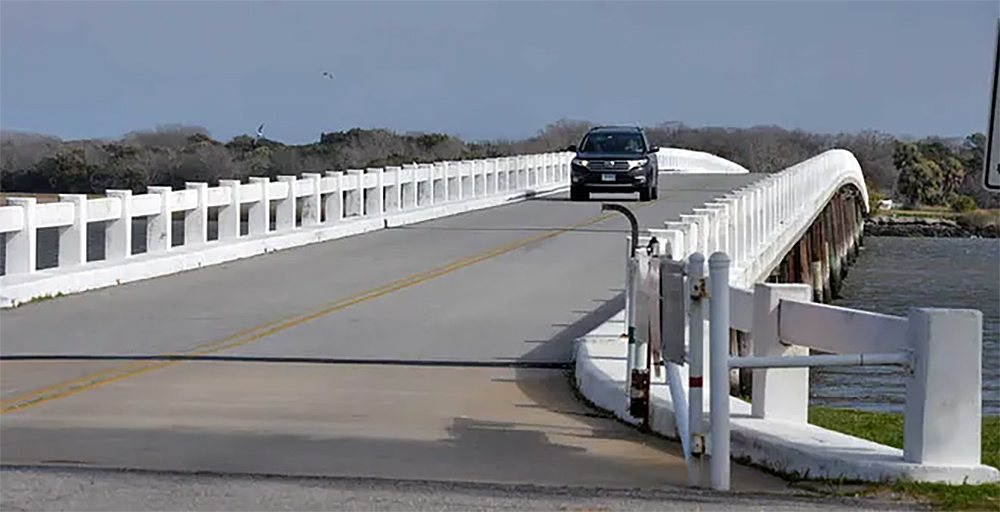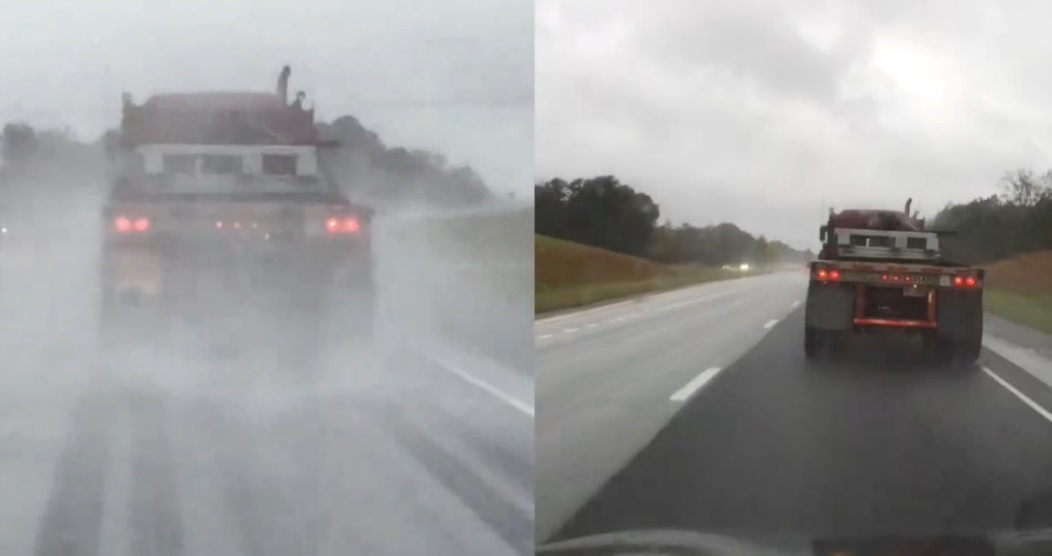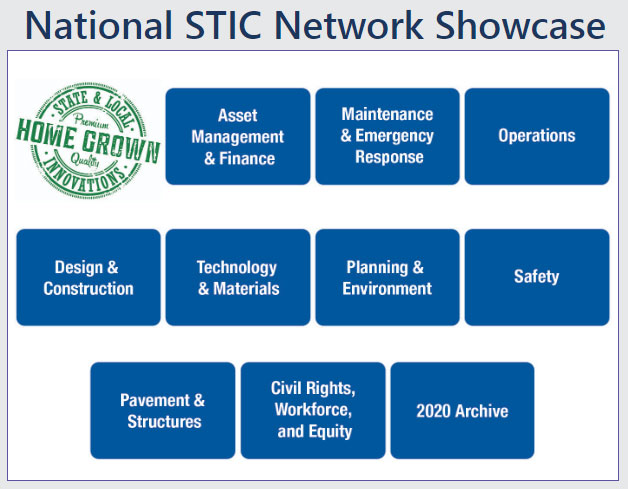August 17, 2023
Innovation of the Month: Enhancing Performance with Internally Cured Concrete (EPIC2)
Minimizing cracking on concrete bridge decks is key to a long service life. Cracks provide a direct path for water and other ions to the interior of the concrete and the reinforcing steel of the structure. Over time, this can jeopardize the structural integrity of the bridge and require unplanned maintenance to address the cracking. A bridge’s service life can be reduced by up to 50 percent depending on the depth and width of the cracking.
A primary cause of early age cracking is shrinkage, which occurs during the curing process as water in the pores of the concrete is lost. Notably, some shrinkage occurs independent of any exterior environmental conditions, so even rigorous application of external curing won’t fully prevent it. This can be amplified in concrete mixtures optimized for durability. One solution is to create an internal reservoir of water for curing that prevents shrinkage by using internally cured concrete (ICC).
 The Fort Pulaski Bridge deck helped demonstrate FLH’s ability to deliver ICC projects. (Credit: FHWA)
The Fort Pulaski Bridge deck helped demonstrate FLH’s ability to deliver ICC projects. (Credit: FHWA)
Federal Lands Highway (FLH) has demonstrated this proven technology to be an effective tool to reduce shrinkage. Some of FLH’s successes with this technology are described in this tech brief, which evaluated ICC on three projects in Idaho and Georgia. After more than two- and a-half years in service, the featured bridge decks with ICC showed little, if any, cracking. In fact, during that survey, only 10 linear feet of shrinkage cracking was visible on approximately 43,000 square feet of bridge decking.
Implementing ICC also required only minimal modifications to standard contract language and the cost increase was only approximately $100 per cubic yard of concrete. On the two projects where this cost was calculated, this represented an average overall project cost increase of 0.7 percent.
This small investment in a material upgrade can result in major returns on investment through reduced maintenance over the bridge deck’s lifecycle.
To learn more about how your agency can benefit from or implement ICC, visit the enhancing performance with internally cured concrete (EPIC2) team’s webpage. Subscribe to EPIC2 email updates to stay informed, or contact Tim Barrett, FHWA Turner-Fairbank Highway Research Center, or Mike Praul, FHWA Office of Infrastructure.
With this type of development, housing and work centers come closer together, reducing vehicle miles travelled and setting the foundation for robust multi-modal transportation options. Communities become walkable while simultaneously reducing GHG emissions and stimulating economic growth
SACOG believes this approach is a sustainable, responsible way to improve the region’s communities while also meeting its commitments to reducing GHG emissions. To learn more about SACOG’s plan and work in reducing GHG emissions, please contact Clint Holtzen.
Subscribe to this innovation’s e-bulletin to stay up-to-date on the latest news. To learn more about Integrating GHG Assessment and Reduction Targets in Transportation Planning, please contact David D'Onofrio, FHWA Office of Natural Environment, or Jim Thorne, FHWA Office of Planning.
New Research and Technology Help Open-Graded Friction Course Make a Comeback
Open-graded friction course (OGFC), a thin asphalt overlay, is gaining popularity as transportation agencies find ways to improve durability and maintenance while still achieving safety benefits. OGFC improves drainage and tire pavement contact, which decreases hydroplaning. It also reduces noise, stormwater pollutants, and splash and spray to improve visibility.
 Before and after pictures show how OGFC reduces splash and spray and improves visibility. (Credit: National Center for Asphalt Technology)
Before and after pictures show how OGFC reduces splash and spray and improves visibility. (Credit: National Center for Asphalt Technology)
The U.S. began using OGFC in the 1970s, but a National Center for Asphalt Technology survey found that by 1998, 38 percent of respondents had discontinued its use due to two main concerns. Since OGFC is permeable, it allows air to circulate through the mix, making it more susceptible to icing during winter and the asphalt binder could prematurely oxidize, causing raveling.
South Carolina receives nearly 50 inches of rain annually. That’s why South Carolina Department of Transportation (SCDOT) has used OGFC for years to help reduce hydroplaning on high-volume routes. When SCDOT realized it was getting about half the life expectancy out of its OGFC projects, the agency worked with Clemson University to identify ways to improve OGFC design, performance, construction, and maintenance.
Learn more about the Clemson/SCDOT findings in this final report. To learn more about OGFC or other targeted overlay pavement solutions (TOPS), please contact Tim Aschenbrener, FHWA Office of Preconstruction, Construction, and Pavements (Asphalt), or Robert Conway, FHWA Resource Center (Concrete).
Discover Home-Grown Innovations from Around the Country

Are you interested in homegrown innovations being used by your peers in other parts of the country? Check out the National STIC Network Showcase, a component of the EDC-7 Virtual Summit. Registering for the event allows you to access all the content through February 2024. The Showcase features several innovations in the area of Civil Rights.

Learn about the Washington State Department of Transportation's diversity, equity, and inclusion (DEI) plan, which formed an agency-wide workgroup from all disciplines to focus DEI planning efforts into selected areas. The plan has helped improve the State’s decision-making process, making strides to create a more inclusive work culture, diversify Department spending, create business and career opportunities for under-represented individuals and business owners, and enhance community engagement.
Celebrate the ingenuity of your peers and read about these innovations—developed and deployed in-house at transportation agencies nationwide. Additionally, we invite you to watch the one-hour presentations on-demand that feature many of these and other innovations.
In Case You Missed It- July/Aug Innovator
The July/August issue of Innovator is available, accessible from your computer, tablet, or mobile phone to optimize your reading experience.
In this issue:
- An Open-Ended Approach to Meeting Design-Build DBE Goals
- Capturing the Value Created by Transportation
- Missouri Accelerates Market Readiness for Work Zone Innovations
- Innovation and Impact
- And more...
Comments? Questions? We'd love your feedback! Drop us a line and let us know what you think.
Read past issues and sign up to receive Innovator by email here, or text "FHWA Innovation" to 468311 to get Innovator on your smartphone.
Stay Up to Date on the EDC Innovations That Interest You Most

EDC teams are always on the move! If you blink, you could miss out on important webinars, case studies, tools, videos, and more. To never miss information for the EDC innovations that interest you most, visit the subscription page and select the topics you’d like to receive updates on directly from the teams that coordinate them.
Recent bulletins:
Local Aid Support 8/9/23
NextGen TIM 8/9/23
NextGen TIM 8/2/23
TOPS 8/2/23
Strategic Workforce Development 8/1/23
Crowdsourcing 8/1/23
Strategic Workforce Development 7/28/23
About EDC
Every Day Counts, a state-based initiative of the Federal Highway Administration's Center for Accelerating Innovation, works with state, local and private sector partners to encourage the adoption of proven technologies and innovations to shorten and enhance project delivery.
EDC News is published weekly by the FHWA Center for Accelerating Innovation.
Notice: The U.S. Government does not endorse products or manufacturers. Trademarks or manufacturers’ names appear in this presentation only because they are considered essential to the objective of the presentation. They are included for informational purposes only and are not intended to reflect a preference, approval, or endorsement of any one product or entity
Recommended Citation:
U.S. Department of Transportation, Federal Highway Administration
EDC News; August 17, 2023
Washington, DC


